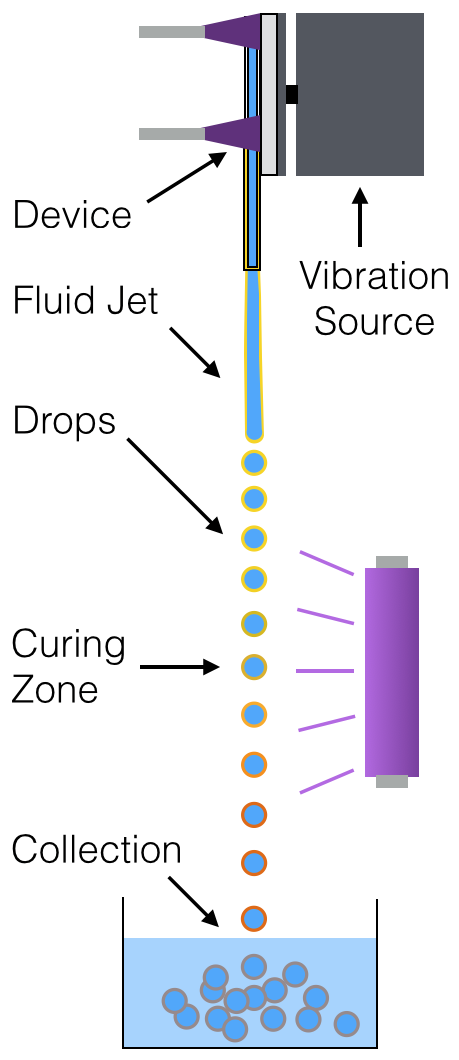The synthesis and fabrication of particles and capsules with tailored microstructures have received significant attention in the last 15 years owing to their potential applications in drug delivery, electronic displays and biotechnology. There has been a fundamental transition in viewing particles as material feedstock for the fabrication of large objects to individual units with their own form and function. The driving force for this transformation is the development of new processing techniques to fabricate these materials with enhanced properties, such as high surface area, narrow particle size distribution, total porosity, shell thickness and permeability.
In many advanced applications such as drug and gene delivery, photonics and catalysis, the distribution and organization of matter play an important role in providing new functionalities. Development of new fabrication methods for new and old materials is essential to the growth in this area.
Livermore researchers have developed a method of fabricating functional polymer-based particles by crosslinking UV-curable polymer drops in mid-air and collecting crosslinked particles in a solid container, a liquid suspension, or an air flow. Particles could contain different phases in the form or layered structures that contain one to multiple cores, or structures that are blended with dissolved or emulsified smaller domains. Particles can be spherical, oval-shaped or irregularly shaped with a size range of 1 μm - 10 mm.
Hardening of the particles is achieved by crosslinking the polymer precursor drop, which are generated by co-axial nozzles, with UV when the drops travel through the exposure window. Particles can also be obtained through thermal setting and solvent extraction after collection. Crosslinked particles will be gathered with different collection methods depending on their properties. Final products can be used for carbon dioxide capture, display material, chemical sensing and bio reaction.
The method developed at LLNL eliminates the need of having a carrier fluid during emulsion generation by making drops in air through injection. Drop movement is affected by gravity, the angle of the nozzle, and the flow rate of the fluids. By using polymer precursor that can cure within seconds of UV exposure, encapsulation is completed by the time particles are collected, greatly reducing the fabrication time. Single unit production rate is 50x-1000x more than that shown in typical microfluidic-based production, and the production apparatus can be parallelized for even higher production.
This technology is useful for applications such as carbon capture, display material, chemical sensing, bio reaction, enzyme scaffold, and other applications that uses functional particles/capsules.
US Patent No. 11173461, Fabricating structured particles through rapid hardening and tailored collection methods published 11/16/2021


